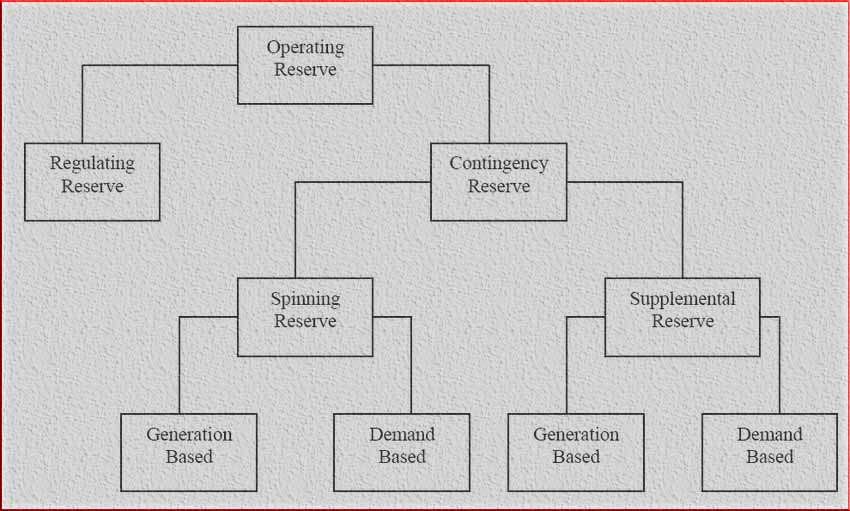Operating Reserves in Power System: Important Types and Formulas
Operating reserves are an essential component of power systems to maintain grid stability and reliability. They ensure that there is a buffer of available generation capacity that can be quickly dispatched to address sudden changes in electricity demand or supply.

Read More About
Let’s dive deeper into the types of operating reserves and some relevant formulas:
Types of Operating Reserves
Spinning Reserve (Rs)
Spinning reserves consist of generators that are synchronized with the grid and running at less than full load. They can quickly increase their output to cover unexpected demand increases or supply disruptions.
Non-Spinning Reserve (Rns)
Non-spinning reserves involve generators that are not synchronized with the grid but can be brought online and synchronized within a specific time frame when needed.
Supplementary Reserve (Rsus)
Supplementary reserves provide an additional layer of capacity that can be deployed in case larger deviations in supply and demand occur due to unforeseen events.
Regulation Reserve (Rreg)
Regulation reserves are continuously adjusting reserves used to maintain the balance between supply and demand in real-time, compensating for small fluctuations.

Formulas and Calculations for Operating Reserves
Reserve Requirement Formula: This formula helps us figure out how much extra power we need to keep in reserve in case of unexpected situations.
Formula: Reserve Requirement = Highest Expected Demand × Reserve Margin
Explanation: To calculate the reserve requirement, we take the highest expected electricity demand and multiply it by a certain percentage called the reserve margin. The reserve margin represents the extra capacity we want to have on standby to handle surprises.
Available Reserve Formula: This formula helps us understand the total amount of extra power we currently have available as reserves.
Formula: Available Reserve = Spinning Reserve + Non-Spinning Reserve + Supplementary Reserve + Regulation Reserve
Explanation: The available reserve is the sum of all the different types of reserves we have: spinning reserve (ready power), non-spinning reserve (getting ready power), supplementary reserve (extra backup power), and regulation reserve (fine-tuning power).
Capacity Shortfall Formula: This formula helps us see if we have enough reserves to cover the demand without any problems.
Formula: Capacity Shortfall = Highest Expected Demand – Available Reserve
Explanation: We subtract the available reserve from the highest expected demand to find out if we’re falling short on the power we might need.
Reserve Deployment Rate Formula: This formula helps us understand how quickly we can bring online the non-spinning reserves to help with sudden changes in demand.
Formula: Reserve Deployment Rate = Non-Spinning Reserve / Reserve Deployment Time
Explanation: The reserve deployment rate tells us how much non-spinning reserve power we can use in a certain amount of time. It’s like knowing how fast we can turn on extra power when we need it.
These formulas and explanations show how operating reserves work like having backup plans for electricity. They ensure that we’re ready to handle unexpected situations and keep the lights on!
Subscribe to our Newsletter “Electrical Insights Daily” to get the latest updates in Electrical Engineering. You can also Follow us LinkedIn and Facebook to see our latest posts on Electrical Engineering Topics.
